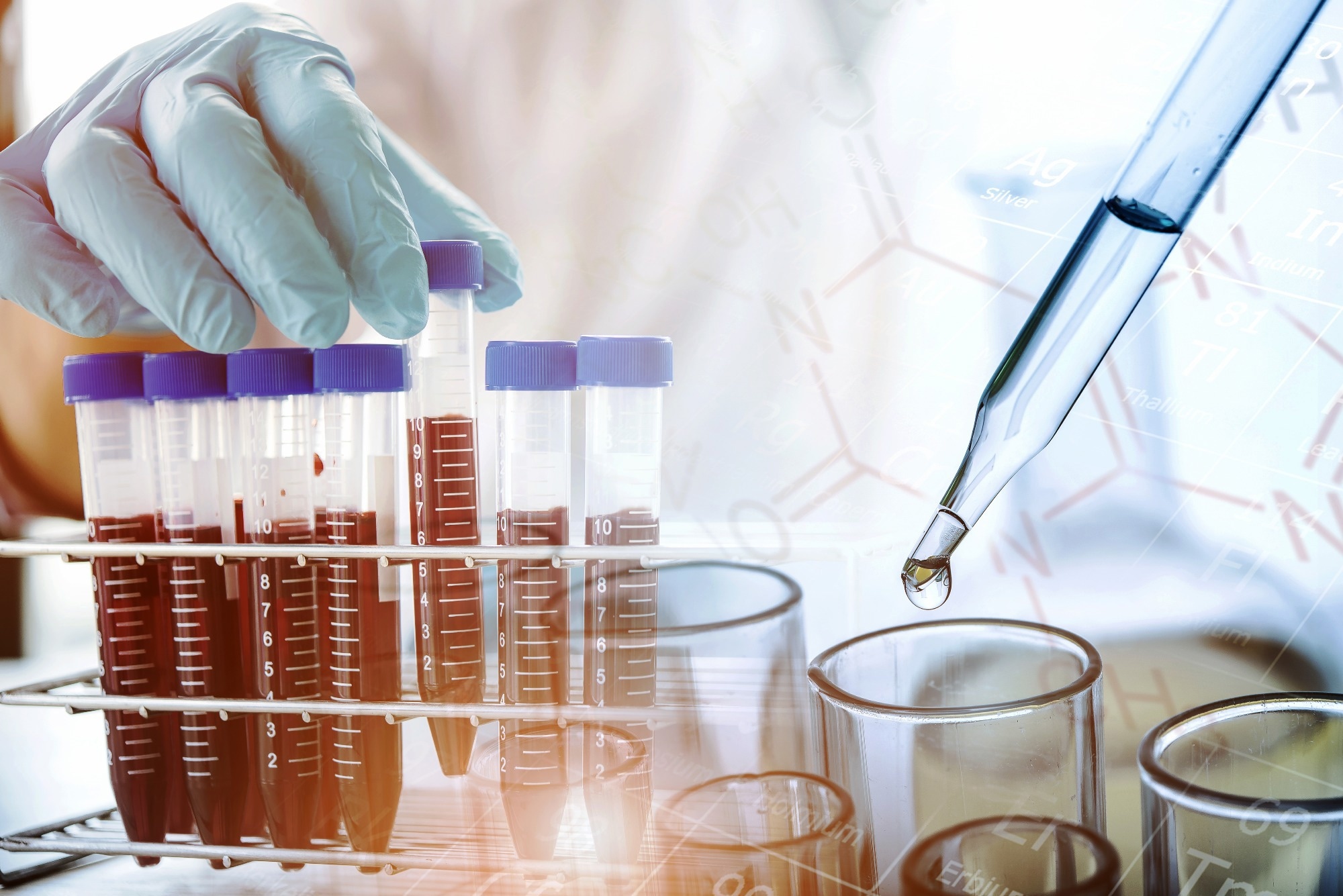[ad_1]
In a recent study published in Nature Biomedical Engineering, researchers developed a multi-omics-based microsampling workflow for profiling proteins, metabolites, lipids, and specific cytokines and hormones, i.e., multiple analytes, in a single blood sample of 10 μl (microsample).

The researchers attempted to demonstrate how a microsampling method could effectively capture all lifestyle-related biological changes in an individual.
Background
Despite advancements in multi-omics technologies, the current sample collection and processing techniques are cumbersome. They require travel to a clinic and access to a phlebotomist and are not sufficiently flexible and non-invasive, resulting in discomfort for the patient.
Furthermore, they require 10 to 50 ml of venous blood, limiting frequent collections, which, in turn, hinders the high-resolution analysis of biological processes that go on inside the body over minutes or hours. Lastly, high sample processing costs could be a reason for reluctance in people to participate in large-scale studies in remote areas.
Studies have demonstrated that dried blood spot (DBS) sampling is often irreproducible, hindering analyte(s) analysis due to a lack of adequate sample volume.
However, volumetric absorptive microsampling (VAMS) is relatively more stable and reliably attains decent analytical performance for targeted metabolites, such as lipids and proteins. Compared to DBS, VAMS is less invasive and easy to perform remotely in native settings.
About the study
In the present study, researchers described two case studies to demonstrate the analytical capabilities of the multi-omics microsampling workflow in capturing and analyzing thousands of metabolites, lipids, cytokines, and proteins in 10 μl of blood. They used a solid matrix-based device, Mitra, to collect fixed blood volumes.
Likewise, the team selected biphasic extraction with methyl tert-butyl ether (MTBE) for efficiently extracting lipids, proteins, and metabolites from 10 μl blood (micro)sample. Also, it ensured these analytes were in the right processed form for the acquisition of proteomics data. They used another blood micro-sample for performing multiplexed immunoassays.
Finally, the team analyzed this processed, annotated, and curated omics dataset. Furthermore, the researchers used wearable sensors alongside multi-omics microsampling to facilitate dynamic health profiling, for instance, intra-day physiological changes in heart rate (HR).
In the first case study, they assessed response to a complex dietary intervention, i.e., Ensure shake, to discover inflammatory and metabolic responses at an individual level. They screened 28 individuals with diverse backgrounds to develop six metabolic response metrics.
The second case study helped the researchers uncover large-scale molecular fluctuations and multiple molecular associations related to physiological changes and physical activities during the day, with clinical biomarker levels, such as glucose and cortisol. They performed this high-resolution or very dense ‘24 by 7’ profiling using 98 micro samples over a week. All participants collected blood micro-samples every one to two hours during waking hours over seven days, with some samplings as short as 30 minutes apart. It helped the researchers collect 98 microsamples with wearable data from two devices, a smartwatch and a continuous glucose monitor (CGM).
Study findings
In response to the ingestion of a mixed meal shake, having a complex metabolic profile, the researchers noted high heterogeneity in individual metabolic and immune responses. The researchers detected 155 lipids, 560 metabolites, and 54 cytokines/hormones in each micro-sample. Most substantially increased metabolites and lipids attained the highest levels after around ~60 and 120 minutes of shake consumption, respectively, and returned to baseline levels by 240 minutes. Future studies should uncover the reasons for these variations at an individual level to help optimize diet and lifestyle changes for customized health, weight reduction, and management of metabolic diseases.
Nevertheless, the presented method could be valuable in research and large-scale stability studies, given that the analytes remain stable over time and with varying temperatures before their quantification. Most analytes, especially proteins, remained stable, while lipids were the least stable analytes. Some issues could arise with relatively unstable molecules. To handle that, first, sample collection procedures could include rapid and cold shipping because processing them within 24 hours would minimize degradation. Another way could be quantifying them from their unique degradation products.
In the second case study, the researchers collected 214,661 biochemical measurements besides wearable physiological data to help analyze the human whole physiome and lifestyle, their changes on an hourly scale, and relationships at a personal level. They grouped 2,213 internal molecular profiles into 11 clusters using fuzzy c-means clustering analysis, of which two followed circadian patterns. Cluster 4 enriched in several metabolites peaked during the day, while cluster 11, comprising mainly lipids, peaked at night. The microsampling method also captured the pharmacokinetics of aspirin, the drug consumed by a study participant in low amounts for four days. It detected its hydrolyzed product, salicylic acid, and revealed a clearance period of ~24 hours.
Conclusions
Overall, the study method could help reliably quantify thousands of molecules, including hormones and cytokines, even if present in insignificant quantities in the blood.
The streamlined multi-omics profiling system of the current study enabled high-frequency molecular profiling with a fixed 10 μl sample volume. The finger-prick blood collection method minimized pain and enabled sampling in a few minutes without requiring travel to a clinic or a lab technician. Moreover, it was scalable and easy to perform remotely.
Overall, it demonstrated the potential for large-scale comprehensive, dynamic molecular and digital biomarker discovery, monitoring, and health profiling.
[ad_2]
Source link


